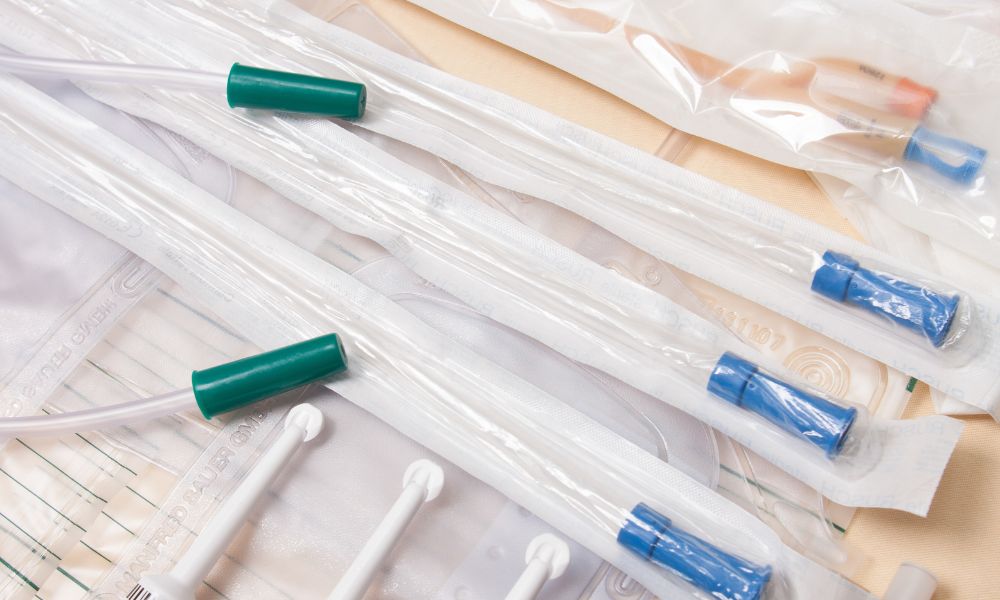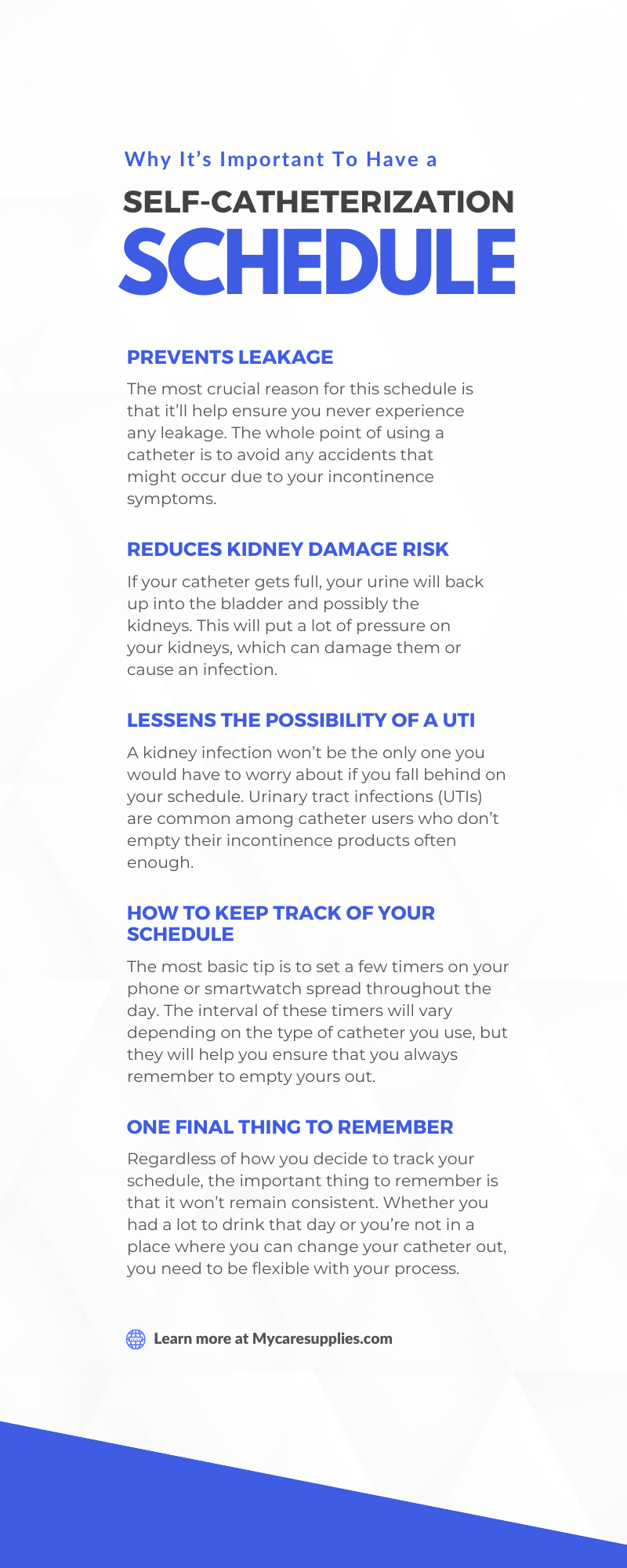Why It’s Important To Have a Self-Catheterization Schedule
Posted by Jeanne Lowry on Mar 17th 2023

When managing incontinence, many people choose to use catheters over incontinence briefs. While each choice has pros and cons, one of the larger determining factors is that people feel like changing a catheter or urine collection bag on the go is much easier than changing an incontinence brief.
However, that doesn’t mean the changing process is always a breeze or convenient. You need to stick to a strict self-catheterization schedule to ensure that everything continues to function properly. If you’re not aware of the importance of this process, this guide will help you better understand why you need to keep up with it.
The Different Types of Catheters
Before we can get into why such a schedule is essential, though, we need to cover the different types of catheters you might choose to use. Each one varies in how it’ll function, so you’ll need to understand them to know how your schedule will change depending on the kind you go with.
Intermittent
The most popular type of catheter is the intermittent variety. This kind doesn’t use a collection bag. Instead, your urine will collect inside the tube. This means you’ll need to change it out multiple times a day.
While this might sound tedious, once you get used to inserting the catheter, it becomes pretty straightforward, which is why it’s such a popular option. The schedule for this type will be more rigorous than the others, but not by enough for it to affect your decision.
Indwelling
When people think of catheters, they tend to picture the indwelling ones. They are the more permanent option that stays inserted for about a month or so and connects to an exterior collection bag that usually attaches to the leg.
Even though you don’t have to change the catheter itself that often, you will need to change or empty your leg bag a couple of times a day. Plus, you’ll need to switch to a larger bedside collection bag every night that you’ll empty in the morning. This all culminates in a regular self-catheterization schedule you must abide by.
External
The final type, external catheters, functions similarly to indwelling. They use external bags that you’ll need to change a few times daily. The most significant difference is that you don’t insert these into your urethra. Because of that, you’ll need to put a new one on every day.
Typically, men are the primary users of this option. There are many options for men’s external catheters online for them to use. However, some female versions exist. These will look and function very differently but follow the same scheduling as their male counterparts.
The Reasons for the Schedule
As you can see, no matter which type of catheter you choose, you must follow a daily schedule for handling it. However, we still haven’t gotten into why following a self-catheterization schedule is so important. In this section, we’ll cover why you need to create and stick to a schedule.
Prevents Leakage
The most crucial reason for this schedule is that it’ll help ensure you never experience any leakage. The whole point of using a catheter is to avoid any accidents that might occur due to your incontinence symptoms. These leakages could still happen if you don’t keep up with your emptying schedule.
Admittedly, a leak is more likely to occur with an intermittent catheter since they hold far less urine than a collection bag. Still, the bags indwelling or external catheters use can overflow if you ignore your regular schedule, so you’ll want to pay attention to them throughout the day.
Reduces Kidney Damage Risk
However, leakages aren’t the only problem that can occur from an overflow. If your catheter gets full, your urine will back up into the bladder and possibly the kidneys. This will put a lot of pressure on your kidneys, which can damage them or cause an infection.
Plus, if you make more urine before you empty your catheter or bag, it’ll have nowhere to go. Remembering to empty your catheter or bag will prevent this problem from becoming possible.
Lessens the Possibility of a UTI
A kidney infection won’t be the only one you would have to worry about if you fall behind on your schedule. Urinary tract infections (UTIs) are common among catheter users who don’t empty their incontinence products often enough.
This is because urine can become trapped, causing bacteria to build up. When that happens, a UTI will be much more likely. Adhering to your schedule will help make this less likely to occur, but personal hygiene is something else you’ll want to keep up with when handling your catheter equipment. If you do both of these things, the chance of a UTI will decrease drastically.
How To Keep Track of Your Schedule
Even though understanding the importance of a self-catheterization schedule should help you keep up with it, we’re all human and can forget to change things out from time to time. That’s why we’ve included some tips to help you remember when to empty your catheter products.
The most basic tip is to set a few timers on your phone or smartwatch spread throughout the day. The interval of these timers will vary depending on the type of catheter you use, but they will help you ensure that you always remember to empty yours out.
If you want to take things a step further, Android and iOS have apps dedicated to catheter users. On these apps, you can also set reminders for your self-catheterization schedule, set goals, check past activity, and track your progress. While this kind of data will be a great help to you in your journey, it’ll also be quite valuable to your healthcare provider. This information will make it much easier for them to analyze how you’re doing and allow them to give you more accurate details on what you should do next.
One Final Thing To Remember
Regardless of how you decide to track your schedule, the important thing to remember is that it won’t remain consistent. Whether you had a lot to drink that day or you’re not in a place where you can change your catheter out, you need to be flexible with your process. You won’t always be able to get to a bathroom as soon as your timer goes off. Even if you can, there might not be anything to remove.
When that happens, it’ll be up to you to keep track of the next best time to perform a self-catheterization. Fortunately, the longer you do it, the better you’ll become at knowing when to go. Eventually, you won’t need the timers or apps to help you keep track. You’ll know when it’s time.


